Comet Tsuchinshan-ATLAS (C/2023 A3)
Posted: 13 October 2024
1753 MST: Sunset on Saturday, 12 October 2024. I was outside with my clear view to the western horizon getting ready to observe Comet Tsuchinshan-ATLAS (C/2023 A3).
1829 MST: Tally Ho! Using 7x50 binoculars I spotted the comet. A short tail was visible in the binoculars.
1841 MST: The comet was now visible to the naked eye. A long tail was even visible.
Here are several photos in chronological sequence.
1833 MST: D850 DSLR (f/5.6, 1/2sec, ISO 800, FL 112mm)
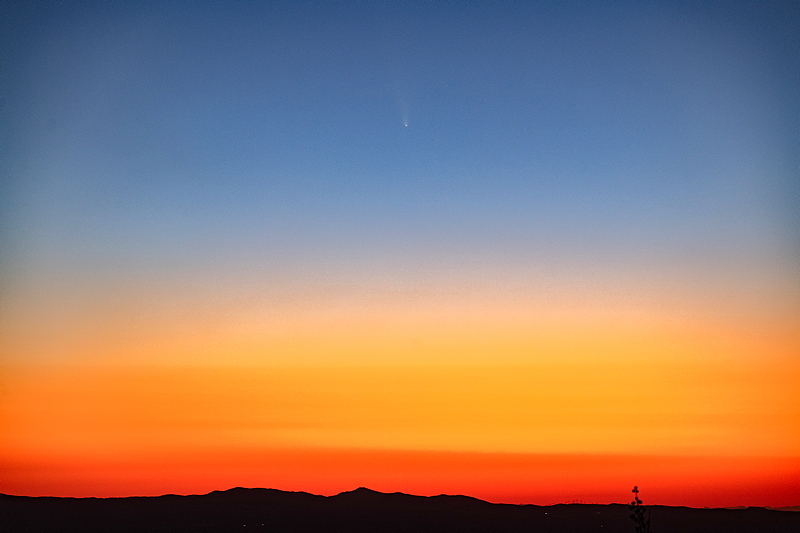
1843 MST: D850 DSLR (f/5.6, 1 sec, ISO 800, FL 112mm)
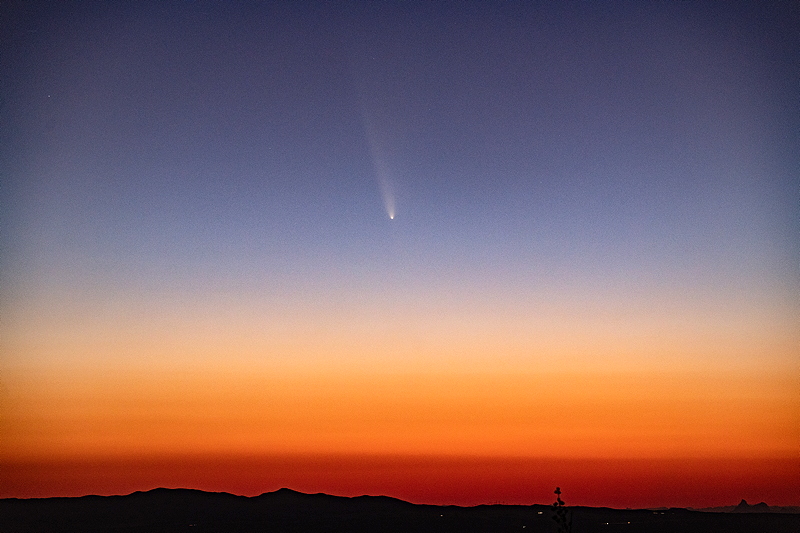
1844 MST: iPhone 15 Pro Max (Night Mode, 10 seconds, 5X lens)
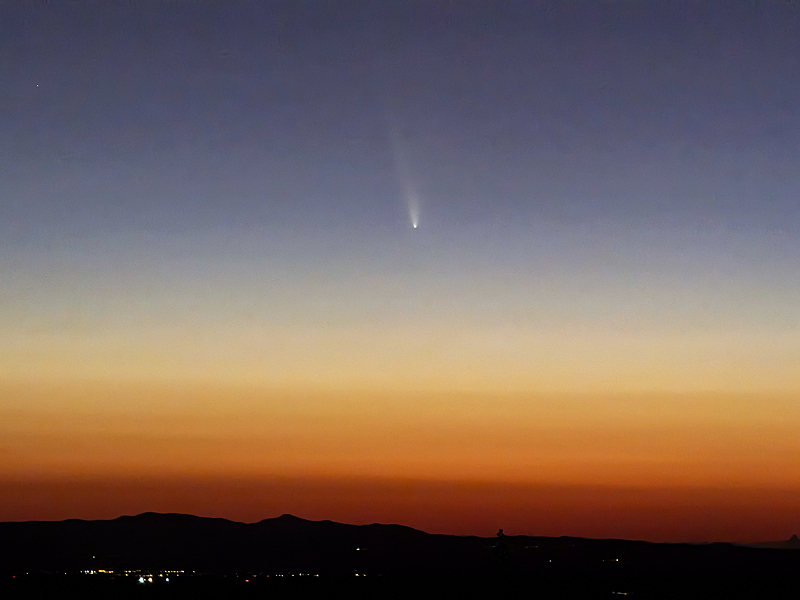
1853 MST: D850 DSLR (f/5.6, 4 sec, ISO 800, FL 112mm)
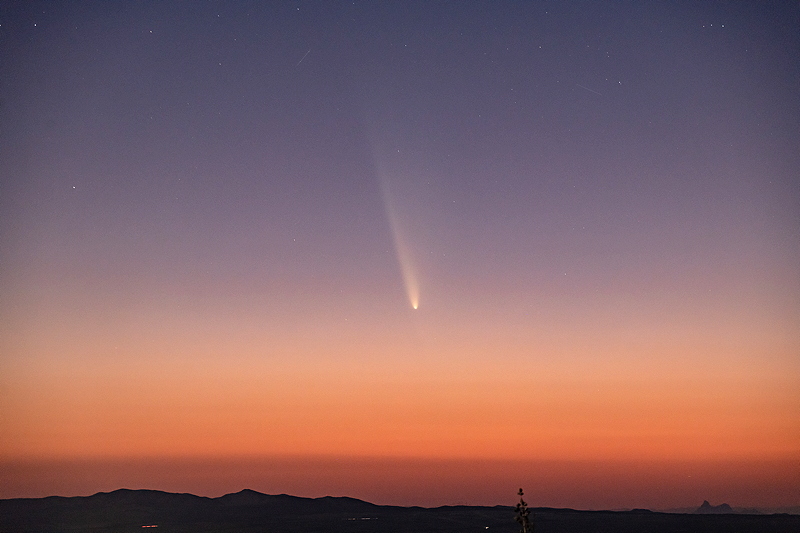
1854 MST: D850 DSLR (f/5.6, 2 sec, ISO 3200, FL 112mm)
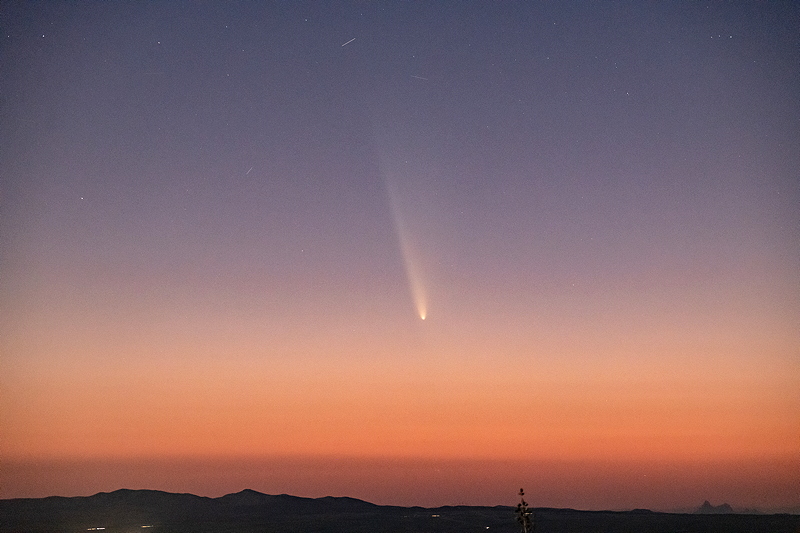
1857 MST: iPhone 15 Pro Max (Night Mode, 10 seconds, 2X lens, slight crop)
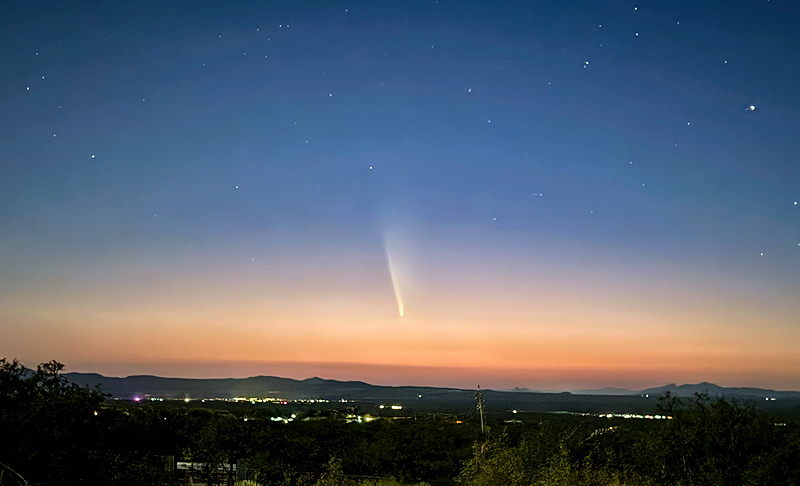
1900 MST: D850 DSLR (f/5.6, 2 sec, ISO 4000, FL 112mm)
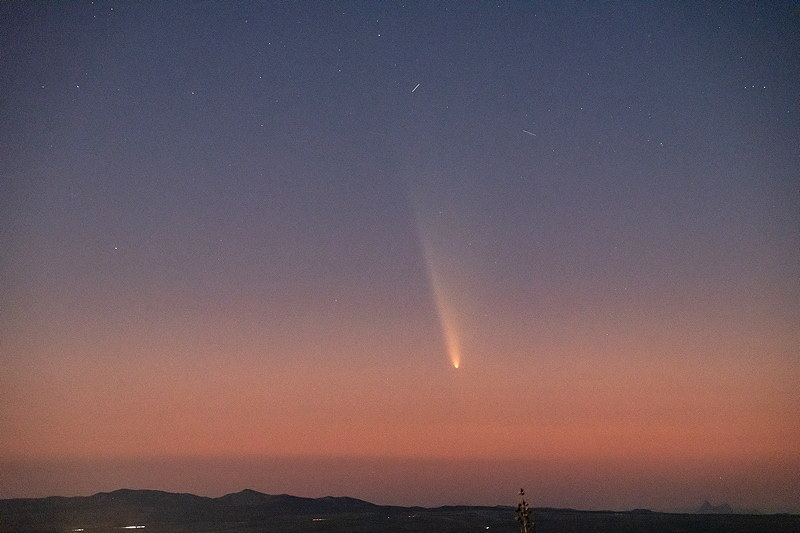
1904 MST: D850 DSLR (f/5.6, 2 sec, ISO 6400, FL 112mm)
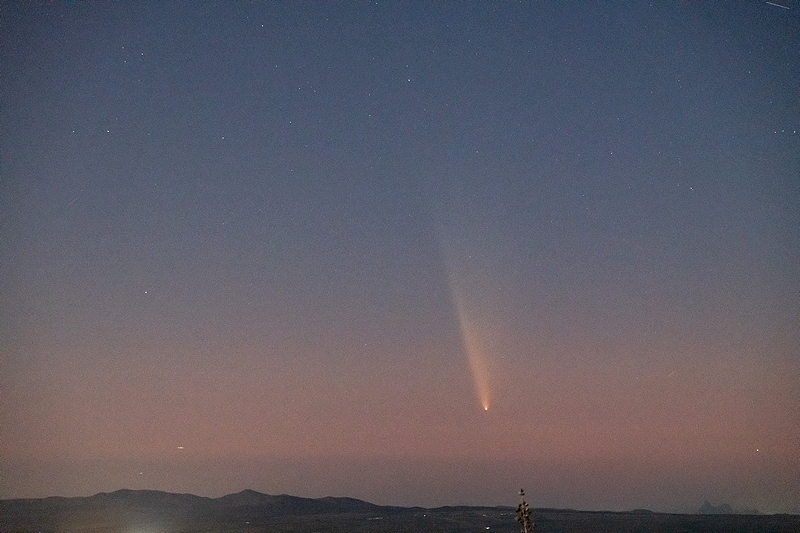
The waxing gibbous Moon was high in the southern sky, and so brightened the sky somewhat as twilight was ending. As seen in the photos above, the comet was getting low in the western sky as twilight ended. The comet will be higher in the western sky in the coming evenings.
1911 MST: iPhone 15 Pro Max photo of the Moon. Taken with the NightCap Camera app (ISO 34, 1/125sec, 5X lens, cropped).
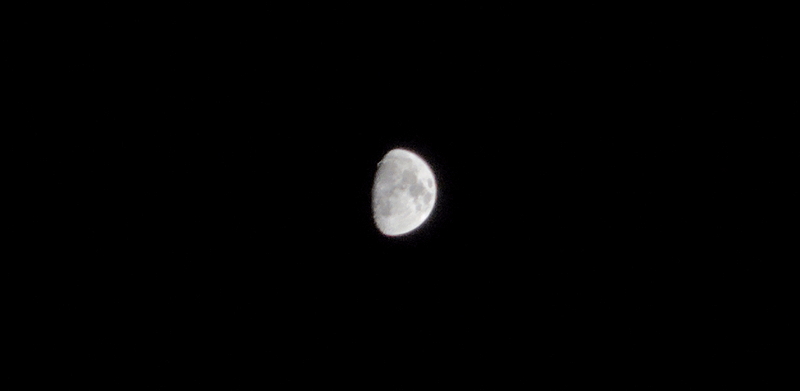
Comments are welcome using Email. Please read the Email Etiquette guidance.
Cassiopeia Observatory Home Page
Copyright ©2024 Michael L. Weasner / mweasner@mac.com.
URL = http://www.weasner.com/co/Reports/2024/10/13/index.html
